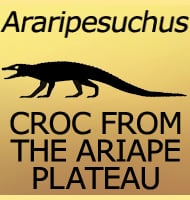Ctenochasma
In Depth Ctenochasma is one of the few known filter feeding pterosaurs, and its name heads up the group Ctenochasmatidae which includes similar pterosaurs such as Pterodaustro and Unwindia. The method of pterosaurs filter feeding is quite simple as instead of having the large needle like teeth associated with catching fish and insects, pterosaurs like … Read more
